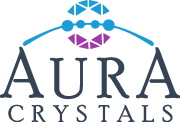California's Proposition 65 Warning To California Residents
Safety and Prop 65
There are two major sets of standards addressing jewelry products. The first is the Consumer Product Safety Improvement Act (CPSIA) and the second is Proposition 65 addressing products sold in California.
California Proposition 65 California's Proposition 65 (The Safe Drinking Water and Toxic Enforcement Act of 1986) requires businesses to provide warnings to Californians about significant exposures to chemicals that cause cancer, birth defects or other reproductive harm. While the Proposition 65 list contains approximately 1000 chemicals, three major chemicals are commonly associated with jewelry and jewelry making tools: lead, cadmium, and phthalates. For more information, please visit www.P65Warnings.ca.gov.
1. Lead Lead is a naturally occurring metal found in the earth's crust. Prop 65 sets limits on lead content in various components for jewelry. A warning is generally not needed if the lead content in components does not exceed the following limits:
- Class 1 Components (No warning needed based on material type and typical lead levels):
- Stainless and surgical steels
- Karat gold (e.g., 10K, 14K, 18K)
- Sterling silver
- Platinum, palladium, iridium, ruthenium, rhodium ("platinum group metals")
- Natural and cultured pearls
- Glass, ceramic, and crystal decorative components (e.g., cat's eye, cubic zirconia, rhinestones, cloisonne), provided they meet Class 2 or 3 limits if they are children's products or contain regulated lead levels.
- Any gemstone that is cut and polished for ornamental purposes, except for the following known lead-containing minerals: aragonite, bayldonite, boleite, cerussite, crocoite, ekanite, linarite, mimetite, phosgenite, samarskite, vanadinite, and wulfenite.
- Elastic, fabric, ribbon, rope, and string with no intentionally added lead.
- Natural decorative materials (e.g., amber, bone, coral, feathers, fur, horn, leather, shell, wood) that are in their natural state or are treated in a way that does not add lead.
- Adhesive
- Class 2 Components (Lead content limits for adult jewelry):
- Electroplated metal (including alloys that are electroplated with suitable under and finish coats): No more than 0.05% (500 ppm) lead by weight.
- Unplated metal (not defined as Class 1 Components): No more than 0.05% (500 ppm) lead by weight.
- Plastic/Rubber (e.g., acrylic, polystyrene, plastic beads/stones, polyvinyl chloride (PVC)): No more than 0.02% (200 ppm) lead by weight.
- Dyes and Surface Coatings: No more than 0.05% (500 ppm) lead by weight.
- Glass and crystal decorative components: No more than 0.05% (500 ppm) lead by weight.
- Specific Products.
- Swarovski Crystal (True Crystal and Lead Content: Rebranded as True Crystal In September 2012, Swarovski modified their manufacturing process to offer the same brilliant cuts and sparkle but with less lead. Since then, their crystals are over 99% lead free, containing 0.009% lead or less and are considered lead-free in the industry. Some of our Swarovski crystal products were purchased before September 2012 and may contain higher lead levels.
- Miyuki Glass Enamel and Glazed Finish Lead Content: Miyuki glass enamel finish products from Aura Crystals can expose you to lead, a chemical identified by the State of California to cause cancer, birth defects, or other reproductive harm. We provide this warning based on our knowledge that lead might be present. A full list of Miyuki Products falling under this category can be found at this link for Miyuki Glass Enamel and Glazed Finish Products. The Miyuki list will show the color number, it will apply to all sizes for that color number.
2. Cadmium Cadmium is a metal listed under Prop 65. For jewelry, the Prop 65 limits for cadmium (both in surface coatings and the underlying substrate material) are 300 ppm (parts per million).
3. Phthalates Phthalates are a group of chemicals commonly found in plastics to make them more flexible. Prop 65 addresses phthalate usage, particularly in plastic handles of hand tools, vinyl, and synthetic leather products. The primary phthalates of concern in these applications are: * Di(2-ethylhexyl)phthalate ("DEHP") also known as Di-octyl phthalate (DOP): 1000 ppm * Butyl benzyl phthalate ("BBP"): 1000 ppm * Di-n-butyl phthalate ("DBP"): 1000 ppm.
o Phthalates are chemical compounds often used as plasticizers, particularly with polyvinyl chloride (PVC), to make plastics more flexible and less brittle. They can be used in the manufacturing of tool handles.
Compliance with California Law To comply with California law, items sold on Auracrystals.com that include a Prop 65 warning contain one or more chemicals known to the state of California to cause cancer, birth defects, or other reproductive harm. Due to variations in manufacturing processes, production batches, and the practicalities of testing every single component, we have included this warning on certain products even if their chemical exposure levels may fall within or below industry limits. This approach ensures maximum transparency and compliance. For more information about Prop 65, please visit www.P65Warnings.ca.gov.
Consumer Product Safety Improvement Act (CPSIA) This act pertains to products designed or primarily intended for children 12 years of age or younger. Our products are intended for adults 14 years or older, and therefore we do not fall under the direct purview of this legislation for most of our offerings. https://www.cpsc.gov/Regulations-Laws--Standards/Statutes/The-Consumer-Product-Safety-Improvement-Act
- Note on Children's Products: For components used in children's products (intended for children 12 or younger), significantly stricter lead limits apply, often requiring lead content to be below 0.009% (90 ppm). As our products are intended for adults, these stricter limits generally do not apply.
